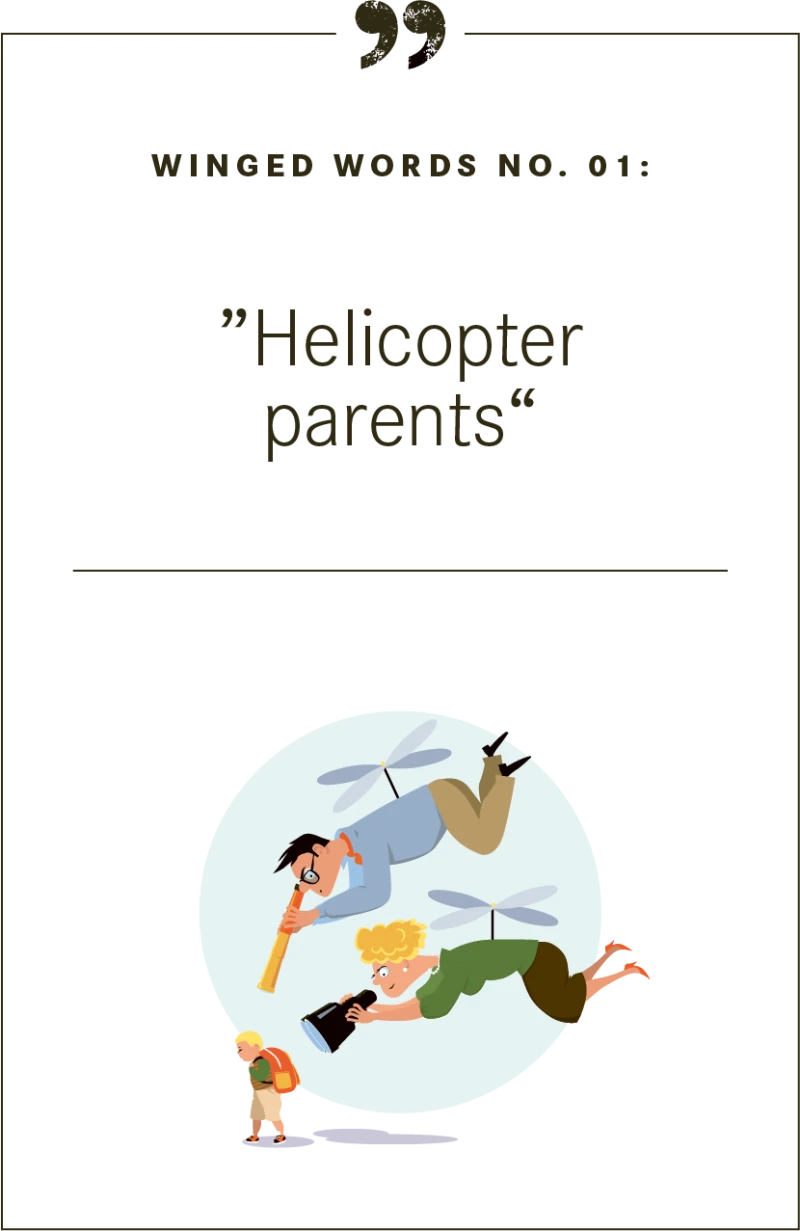good-to-know
Going off like a rocket with a booster, and other winged words
Our everyday language is full of expressions with origins in aviation hardly anyone knows. We track down the unexpected background to some familiar phrases.
author: Andreas Spaeth | 5 mins reading time published on: 09.11.2021
author:
Andreas Spaeth
has been traveling the world as a freelance aviation journalist for over 25 years, visiting and writing about airlines and airports. He is frequently invited to appear on radio and TV programs to discuss current events in the sector.

Flight has had a surprisingly big impact on our everyday language. “It wasn’t long before hovering and flying had found their way into idioms—or winged words, you might call them,” explains Rolf-Bernhard Essig. He is the curator of “Bombenwetter,” an exhibition dedicated to this language phenomenon at the Military History Museum on Berlin’s old Gatow airfield until the end of October 2021. The title is a German term for perfect weather conditions enabling a bombing raid—a phrase with obviously wartime origins. Instantly the curator points out some classic examples: Ambitious but unrealistic ideas are known as lofty plans. And many cultures recognize that people who fly too high have far to fall. Even time itself flies by. Such aerial references are part of our everyday language; Essig even claims that everybody uses such idioms about a hundred times a day. Many of these expressions have quite concrete origins in First or Second World War aviation, but some came into being only in recent decades. AEROREPORT presents a few selected examples.
Helicopter parents
This species of parent is notorious for its overwhelming surveillance and overly attentive behavior toward its offspring, creating challenges for others on the way. The exhibition quotes a former president of the German teachers’ association, who distinguishes between three kinds of helicopter parents: “The transport helicopter, the attack helicopter and the rescue helicopter.” As a noun, the term is recognized in several major language dictionaries; in 2020, Germany’s standard reference work Duden even added it as a verb, so it has definitely reached mainstream vocabulary. Duden defines it as: “to constantly survey your own children due to being overly attentive.” It was about 30 years ago that US child psychologists first used the term “helicopter parents.” Its origin is very fittingly explained at Gatow next to the VIP version of the Mil Mi-8S helicopter, which was still in active use at the time the expression emerged.
Going off like a rocket
Rockets have a surprisingly long pedigree in colloquial expressions. The German phrase for “going off like a rocket” made it into the dictionary back in the 19th century, where it was understood to mean making a sudden, hasty movement. Rockets firing into the sky have long inspired poetic turns of phrase with their proverbial speed and explosive nature. But the meaning of “rocket” has changed over time. Earlier uses focused on the negative consequences of pride and arrogance; for instance, Germans used to say: “When the rocket is at its highest, that’s when it explodes.” At the turn of the 20th century, someone with a short temper would be referred to as a “rocket.” Since the 1950s, though, “going off like a rocket” has tended to describe behavior that is particularly lively, fast and spirited.
To pull the rip cord
The timeline of terms that can be traced back to aviation starts with “to pull the rip cord.” In German, this is a well-known expression meaning to stop a dangerous development in time, which translates as “pulling the plug” in English. It stems from the turn of the last century and has its origin in ballooning. At the end of the 19th century, a Berlin-based aero club was operating meteorological research missions with a balloon called “Phoenix.” This is where the modern rip cord premiered: a red cord, which helped to instantly let gas out of the balloon by rapidly tearing off a strip of its fabric previously applied for that purpose. This would prevent the balloon from being dangerously dragged along the ground after landing and possibly suffering serious damage to its cover. Today, this term is very common in German economic jargon, for example when a company terminates a project or product it had initially invested a lot of money in to prevent it from becoming a liability.
Booster
If there’s one term that sees almost inflationary use in product branding, it’s “booster.” There are booster energy drinks, hydro boosters in face masks for skin care, immune boosters as a food supplement or the booster mascara in cosmetics, and that’s only a small selection. A “booster” means an auxiliary device for increasing force, power, pressure, or effectiveness. Originally, however, it was the first stage of a multistage rocket providing thrust for launch and initial flight. Boosters are also used in aviation to enhance an aircraft’s thrust on take-off. For instance, in 1960s Germany, attempts were made to equip the Luftwaffe’s Lockheed F-104G Starfighter bombers so they could get airborne even without their normal 1,700 meters of take-off run, in the event runways had been destroyed. Thanks to a solid rocket booster, the aircraft could accelerate to 500 km/h and reach 200 meters of altitude in under eight seconds with only a minimal take-off run.
Murphy’s Law
When an open-faced sandwich falls to the ground, naturally it will land upside down. Or if you’re waiting in a line, yours will always be the slowest one inching forward. This is the essence of a realization that “anything that can go wrong will go wrong.” It’s an assertion that has been called Murphy’s Law in common language for decades—and it goes back to a US Air Force test campaign between 1946 and 1958 to research the impact of acceleration forces on the human body. Using rocket-propelled sleds, these tests assessed the biomechanical effects of high speeds on the human body. The objective was to define the physical limits for pilots bailing out with ejection seats. As the legend goes, for one specific test run, the sensors were wrongly attached after an assistant had to choose between two options—and picked the wrong one. This prompted Air Force engineer Edward Murphy (see box), part of the team, to make his famous comment, which then spread quickly. It became a pillar of the “fail-safe” principle that has guided aviation designs ever since, calling for system backups and redundancies, just in case.
The man behind Murphy’s Law
Everybody knows his eponymous law, but almost nobody has any idea who Murphy actually was. Edward Aloysius Murphy, Jr., born in 1918, was a successful aerospace safety systems engineer. When he graduated from the famous West Point Military Academy, he was known for his humor. He became a military pilot and after the war engaged in research for aircraft emergency evacuation systems. One especially important project was a test campaign conducted at Muroc (today Edwards) Air Base in California starting in 1947. Previously, the assumption had been that the human body could withstand forces of no more than 18 times the Earth’s gravity (18 g), but then the tests showed that people are actually capable of surviving short exposures to as much as 46 g. It became Murphy’s specialty to develop advanced ejection systems for experimental and high-speed aircraft such as the XB-70 Valkyrie, X-15 and SR-71 Blackbird. At the end of his career, he took great pride in the fact that his “law” was taken as an order to detect and eliminate possible faults while aircraft were still in their development phase.


















